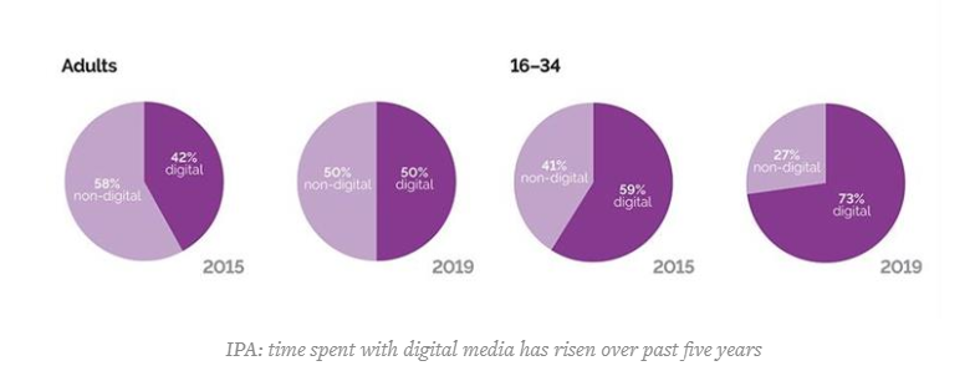A new report from the IPA shows the generation gap in media habits is increasing, not closing, as Gen Xers and Boomers spend at least half their time consuming traditional media.
“The report, for me, has one very clear takeaway that nearly all can immediately identify and act on. For 16- to-34-year-olds, digital media consumption has risen to roughly three-quarters of overall media consumption,” writes Sean Hargrave in MediaPost. “For generic adults, it’s half.”

Image source: IPA
And while time spent with digital media has (obviously) risen over the years, those figures can’t be used to justify a digitally skewed media placement schedule for ad agencies … although the figures could certainly be interpreted that way if you needed to make the case for digital.
“In an age when social media and influencers are all the rage and search marketing is still the largest digital marketing spending stream, it is worth remembering that as far as older adults go, only half their time will be spent on digital,” Hargrave writes.
“That leaves the other half reading a paper or magazine, watching television, listening to the radio and maybe glancing at the posters at the railway station on the way in and out of work,” he continues.
In other words, you can’t put all your eggs in one channel – digital – and expect to engage fully with your adult audience. Yet ad agencies are acting as if digital is the only way.
“The uncomfortable truth is that spending patterns would suggest many agencies are presuming this has already happened. This report is here as a reminder that it has not,” Hargrave notes. “There is plenty of life left in non-digital channels, and they come with the promise of comprising important elements of the half of the average adult’s media consumption that is delivered away from a digital device.”
Yes, digital channels are important. Yet if you want to reach an audience older than Millennials, they can’t be the end-all solution.
The report is fascinating, and you can read it here.
